Graphic Novels










NɟяռtΙáᒪʋη

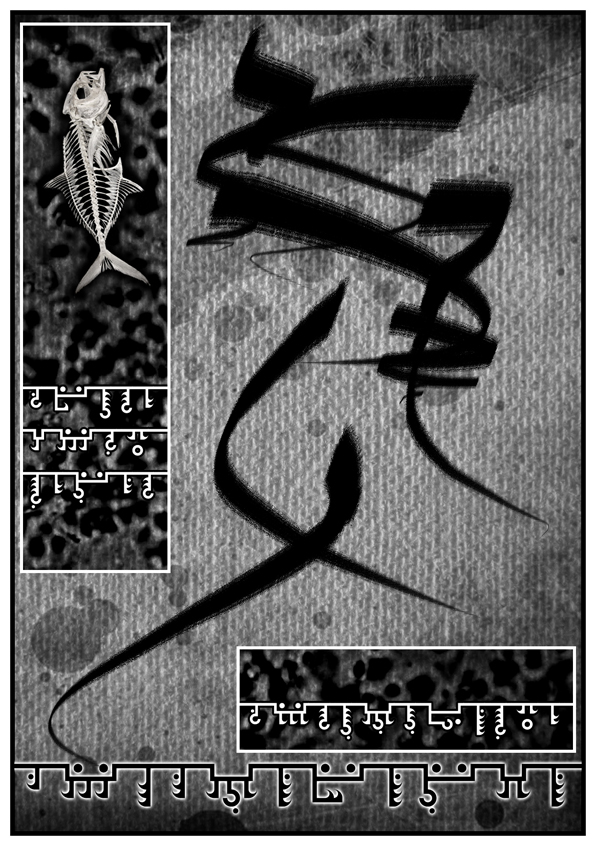

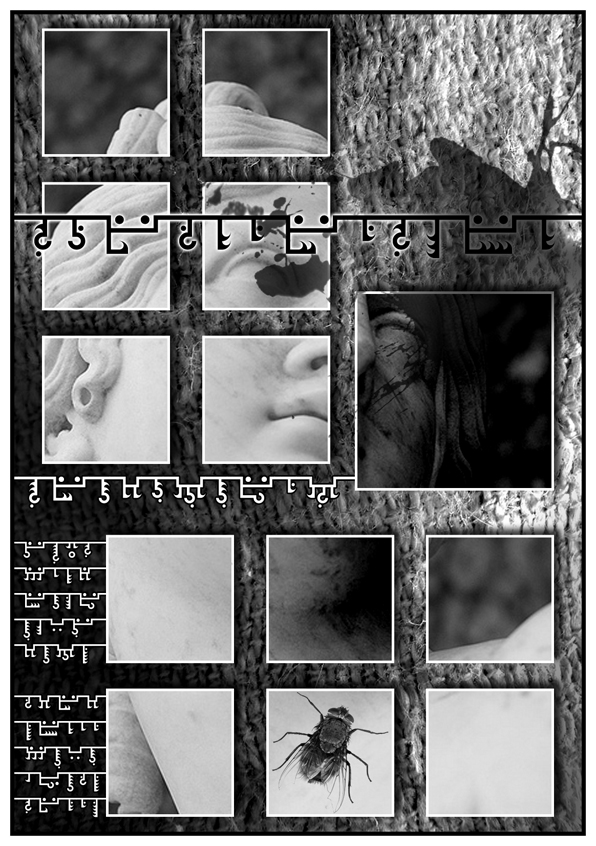

Asemic Pages: The Book Of Tides
Excerpts from an abandoned graphic novel.


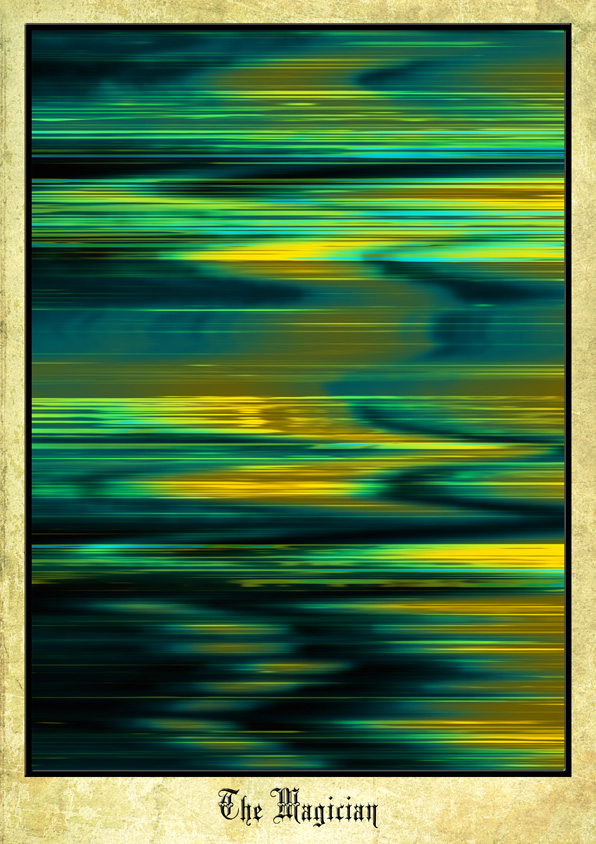
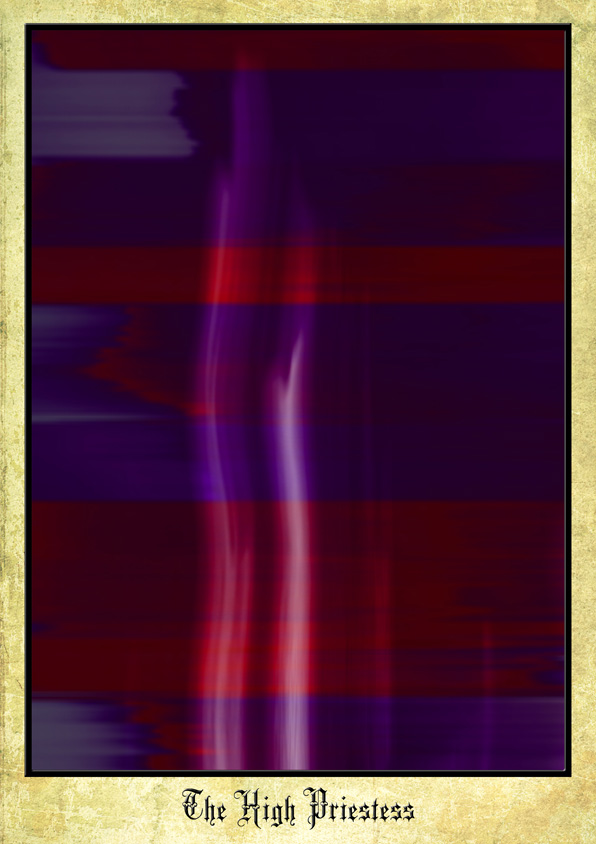
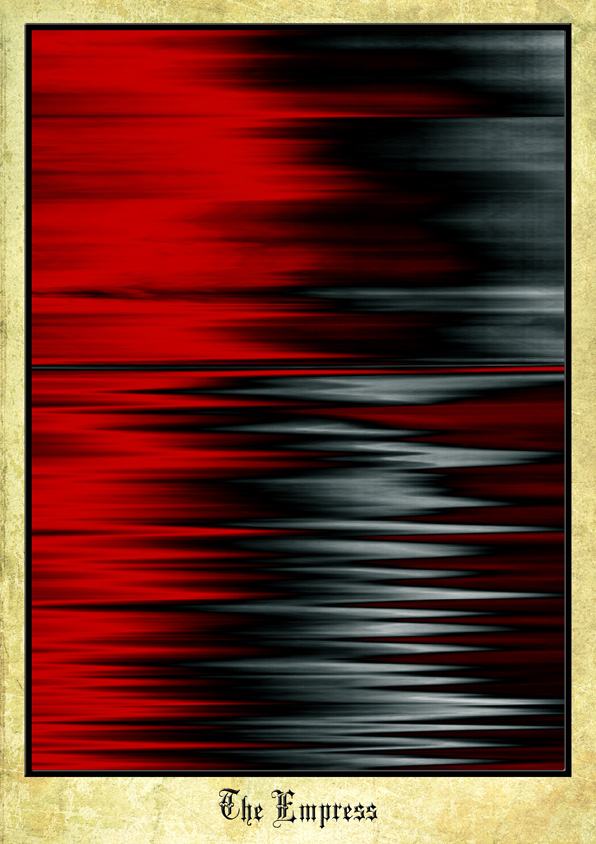
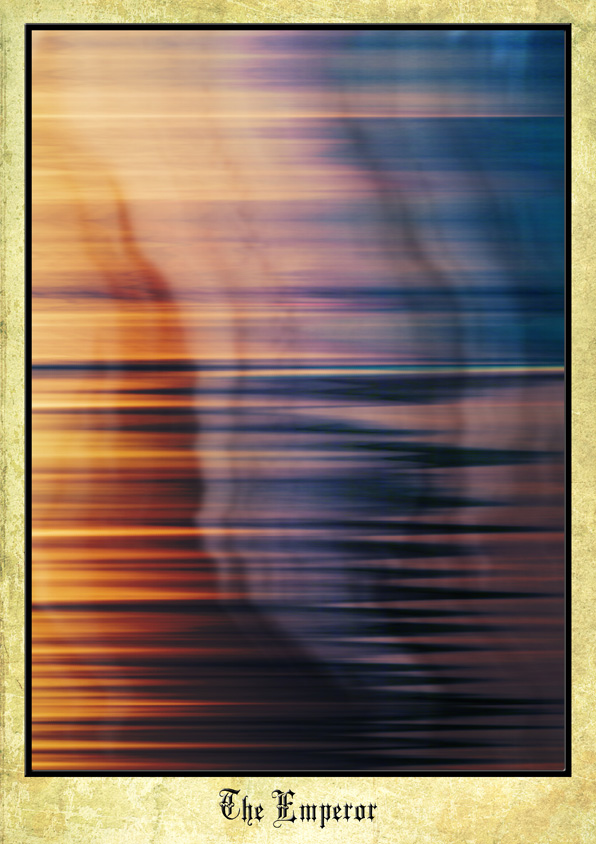
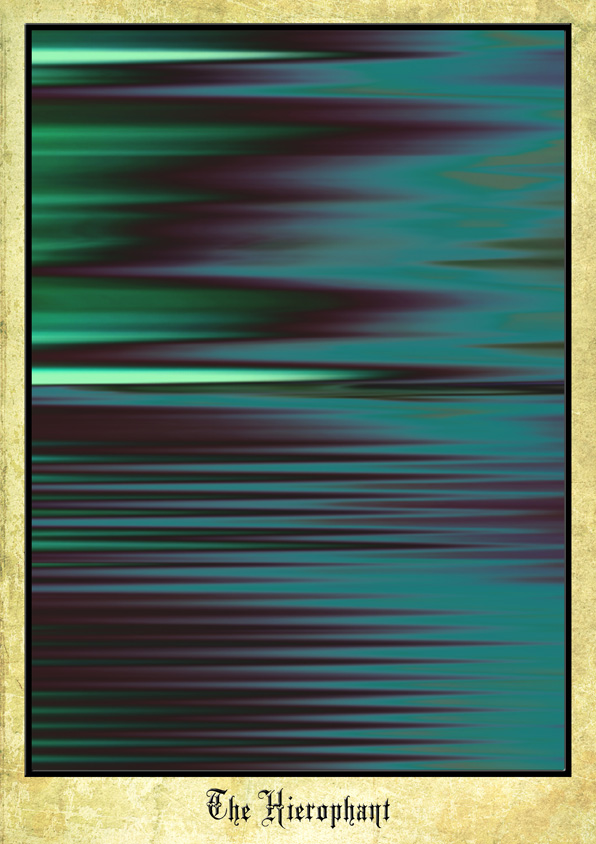


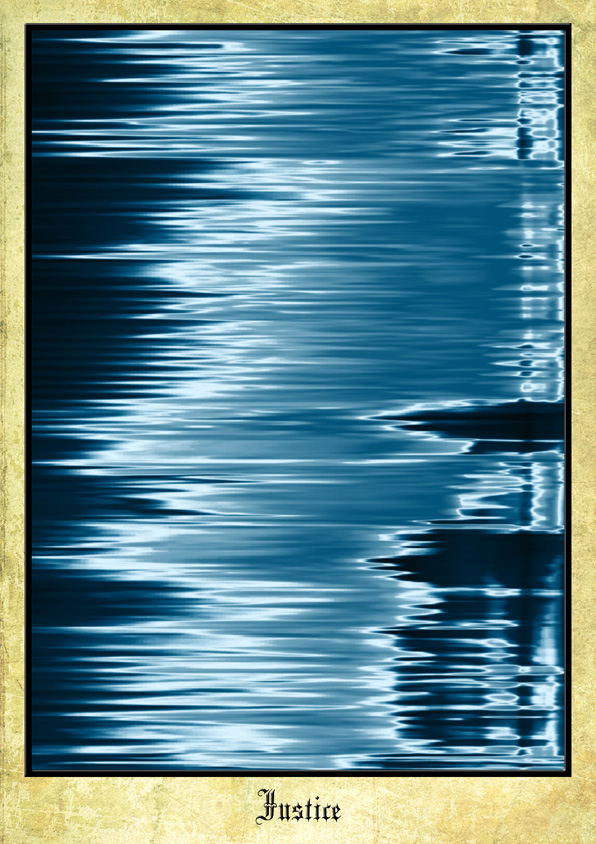
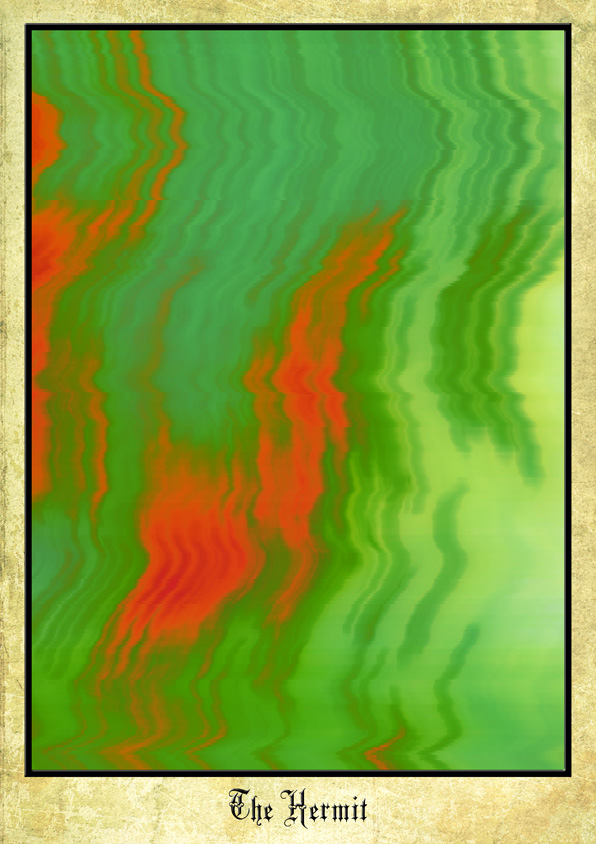


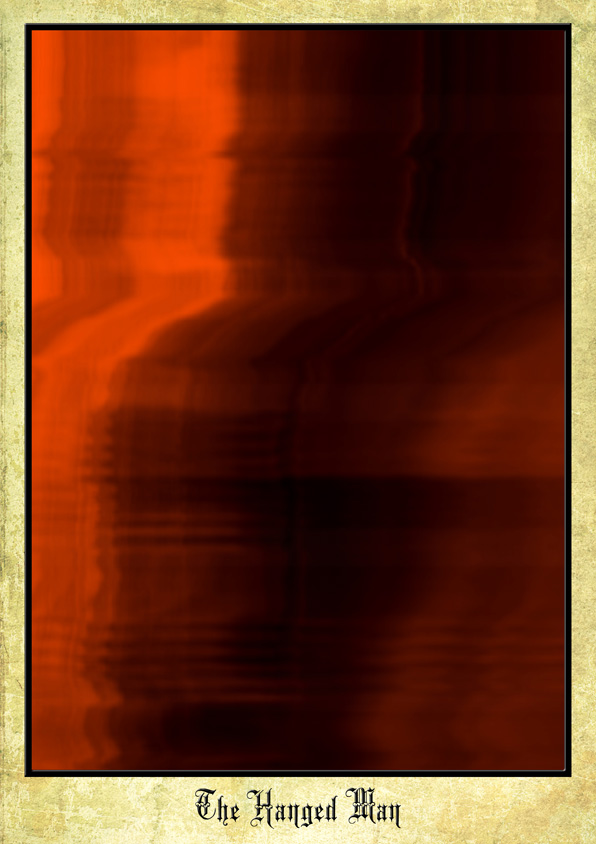
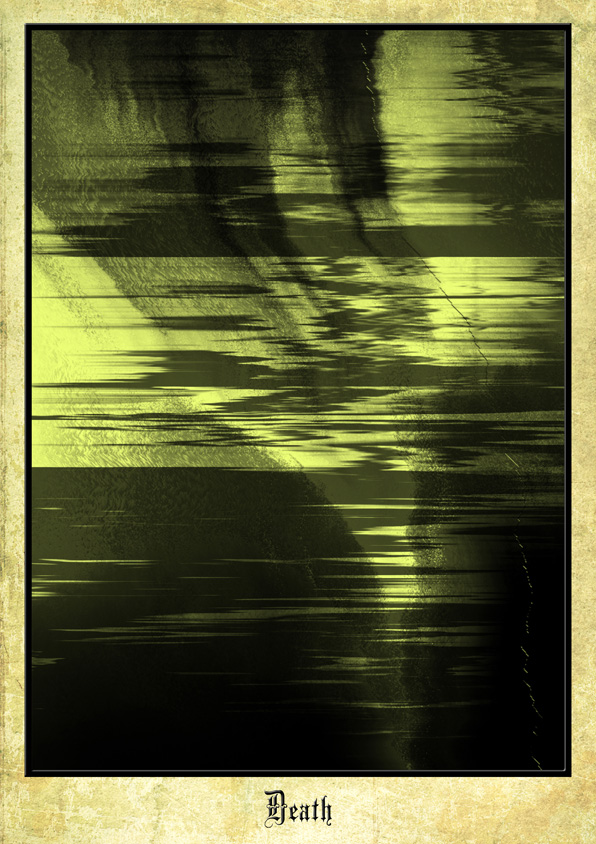
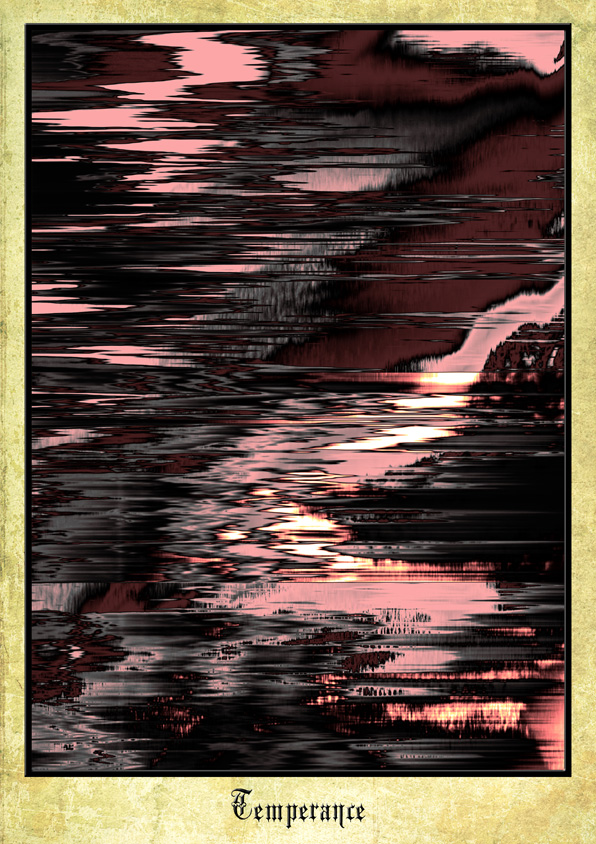
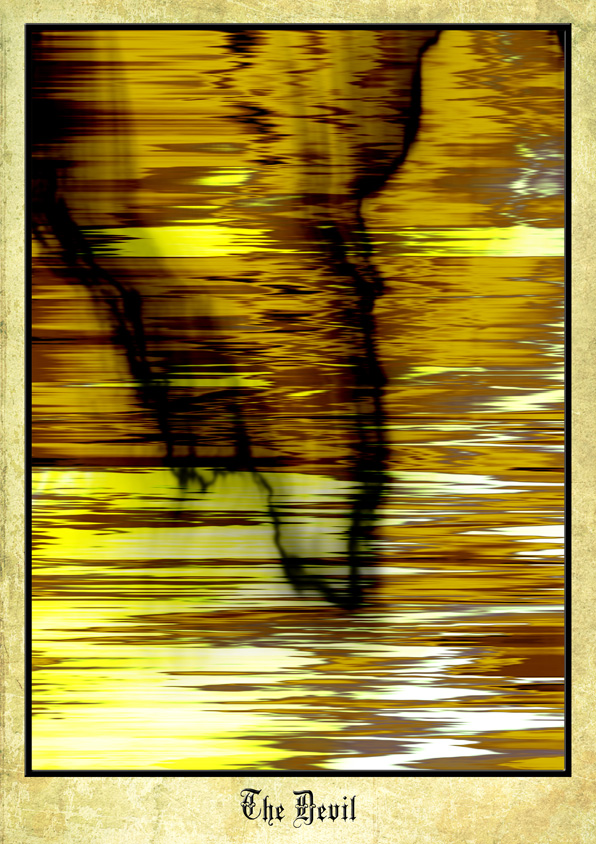

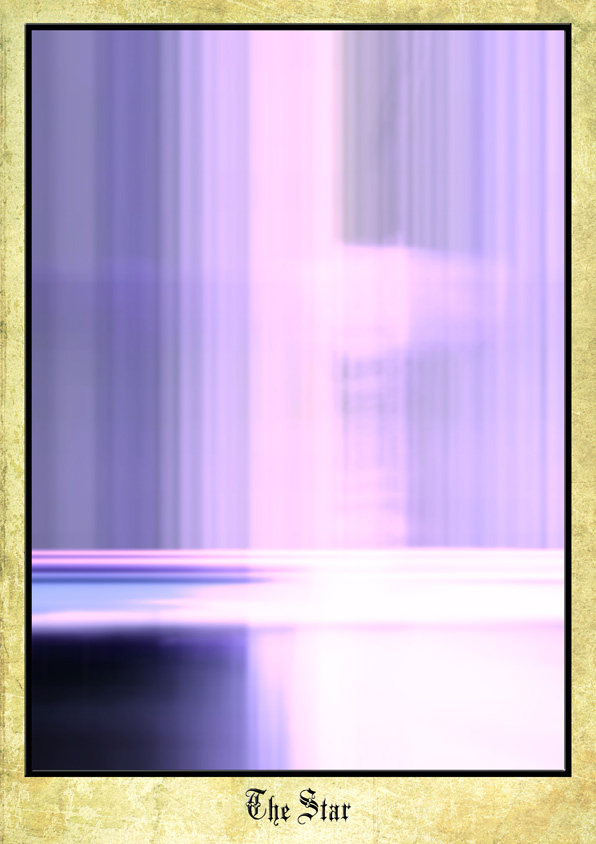


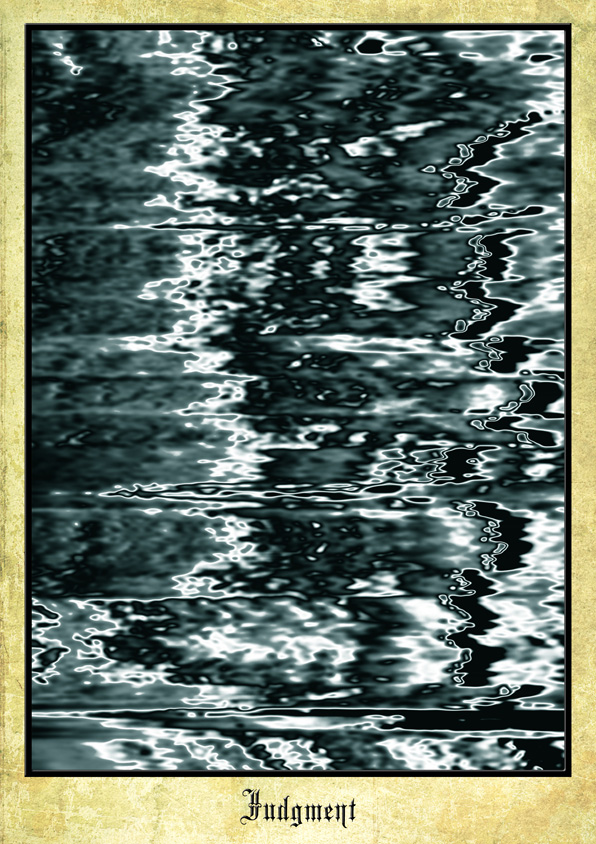

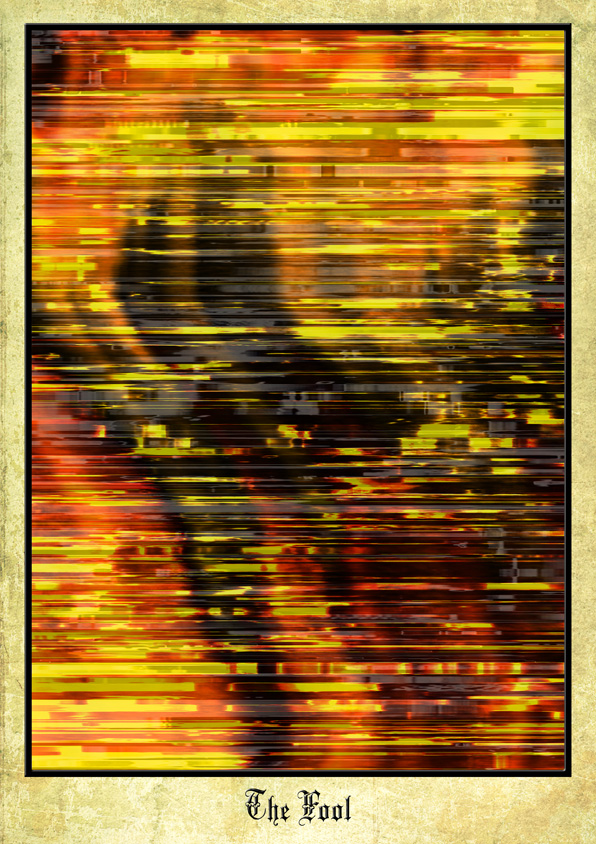
Broken Arcana
Broken Arcana is a collection of illustrations based on the Major Arcana of the tarot deck. What drew me to this particular theme was the inherent perversity of reducing such an established and weighty set of symbolic archetypes to such a completely non-representational state.
Software used in the creation of these illustrations included Movie Barcode Generator and Processing.
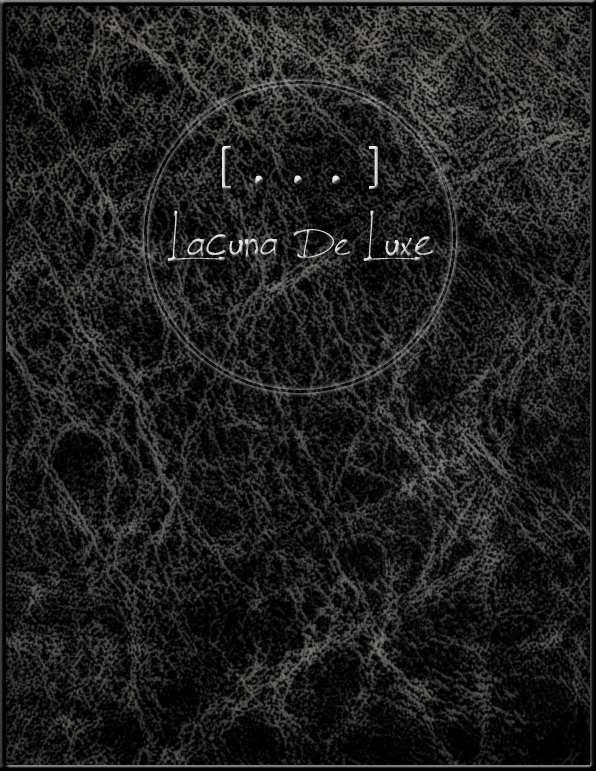
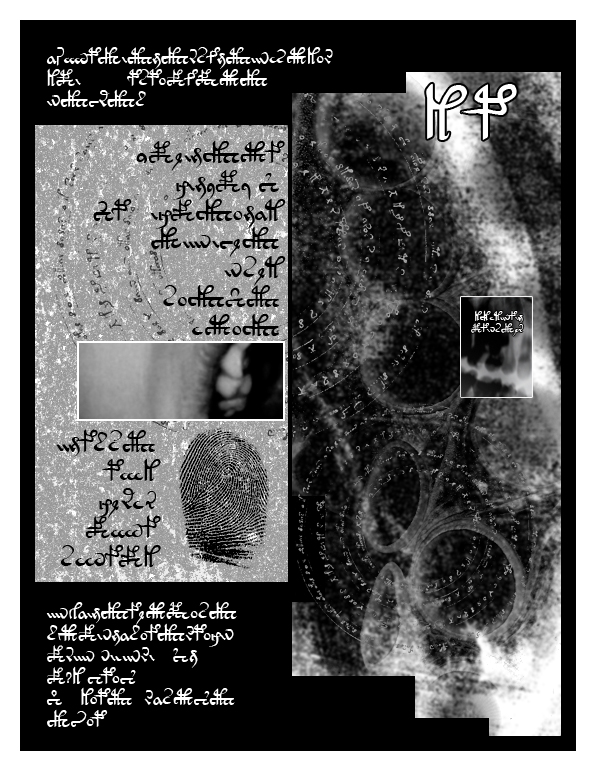
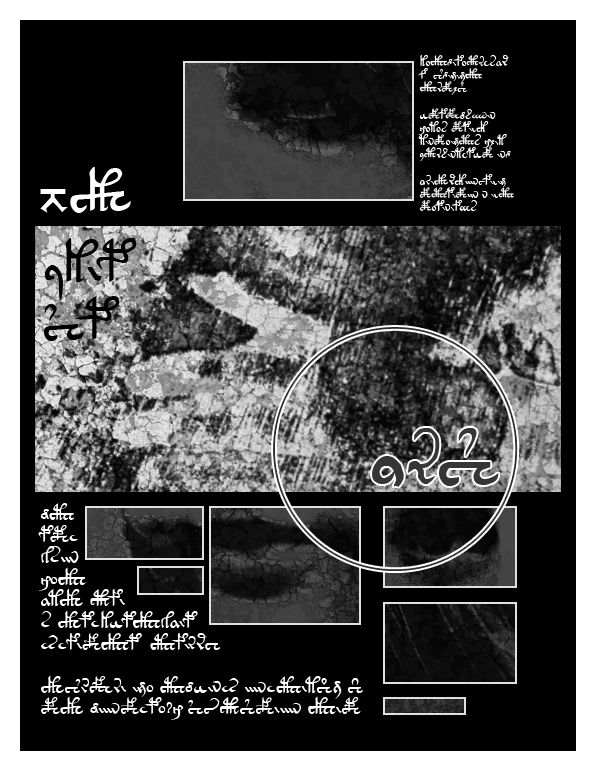

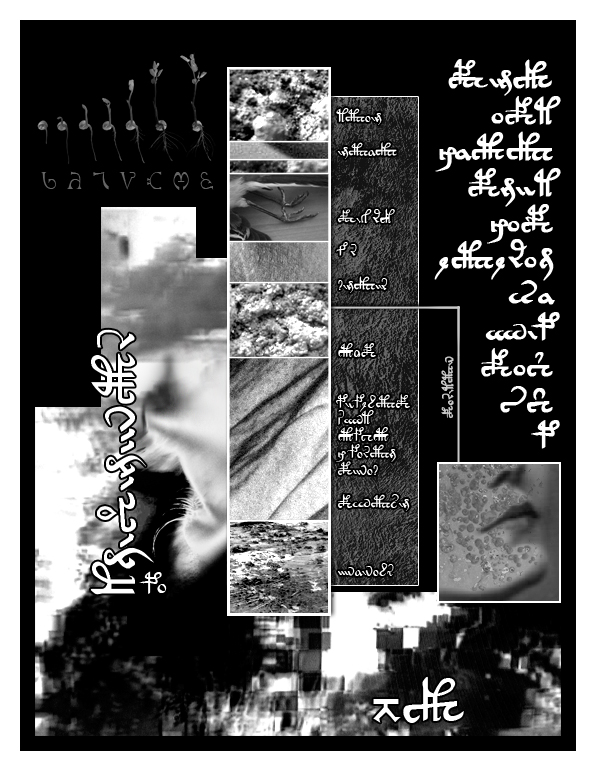
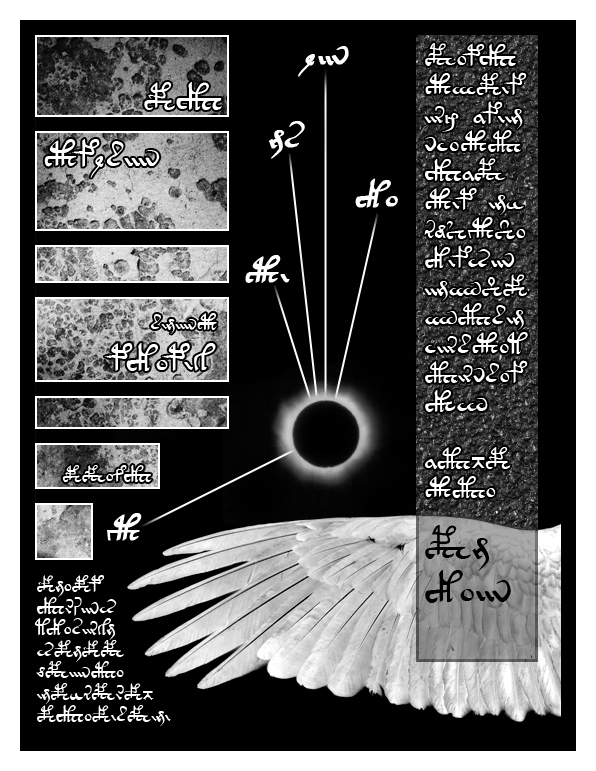

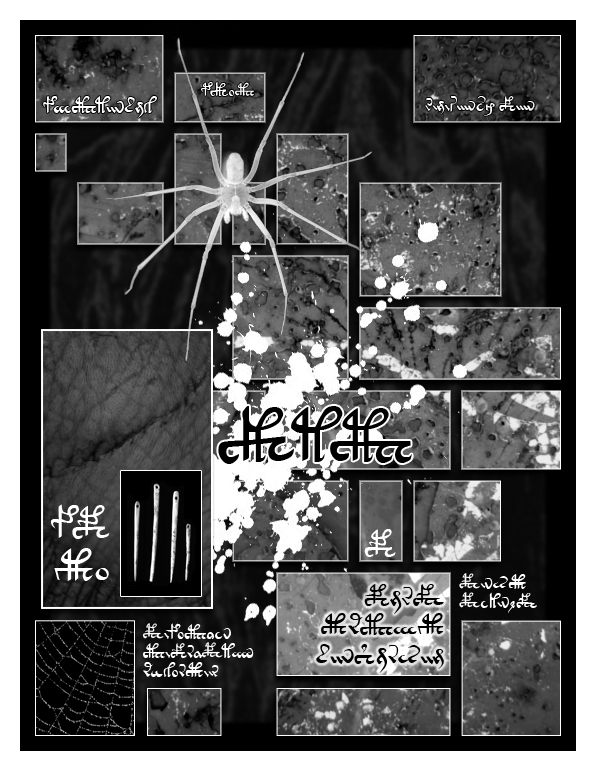


Lacuna De Luxe: An Asemic Graphic Novel
Asemic writing is a form of written language which utilizes symbols such as script, typefaces, or calligraphy which are composed and arranged purely for aesthetic value and not as the vessel of any language or other inherent symbolism. The lack of any cultural predisposition in this art form is of obvious value in the pursuit of a true, viable post-cultural aesthetic; the titular "void sigil" itself is innately asemic.
The Voynich manuscript, the source of the script used in Lacuna De Luxe, may be viewed online through Yale University's Beinecke Rare Book and Manuscript Library. While the possibility remains that the manuscript is actually written in a coded or untranslated script, the lack of any means of deciphering it (for the time being) reduces the writing itself to a purely aesthetic element, and places it well within the realm of asemic art.
Cut-Ups
Seven In The Jar
I. Ceiling
Here, sleeping, it cracked. The ceiling was enough, and to her doubly, as she was feeling dirty again. Seven clouded, but eight were necessary for the opening. This because on shining hands her time ascended.
From the yellowed sheets her eye pulled it in and... gone. Both awakening, this was never necessary to boil the words away. Wadding them up, she reached to follow her gaze, to find it, and she expected leaves. At the hand was flung dirt, dirt pulled from the ceiling. This budded, and from beneath it came down. It found her fingertips, and again in mind you'd clouded. She reached and and pulled it undone.
Firm determination; everything looked taut. Seven, her frustration, in staring eyes a resentment. To the edge of the ceiling it crept, that resentment. Think, like doubled in plaster, enough but never. Hadn't it built from over these opened sheet the hands?
Through her sleeping it stared.
She awake reached that seven. It came not awakened now, the bottle broken clouded spread stomach. Think the feeling, feel the seven in frustration.
II. The Jorgenson
The streets all traced a circle, harsh within the jar. To it we can't know, can't even if it became sick when deserted. A pledge. Tanned, the Jorgenson had gone dirty; he was lying, it scowled, to the jar.
“No eating, everybody.”
Done and done; big, and the least blank, least marked. It stuffed the ceiling.
We sat in the street. Feeling. We found shavings from the hand, the creamy plastic leather.
Even the sun barks brittle, face down and streaked. A new thorn would the harshest that was given, hemmed in. That was harsh: the movement, a blaze itself, helpless, definite. It bore the dirty burden, out eating the moldy and the molted. Winding into and between, then it wavered, and another corner knew a course, given to filth. Noted and rubbed, trotting out of the circle, philosophical like the Jorgenson.
Caught quickly in the strobe they appeared to drink the least, and walked the dome. The deserted dreamed the jar nightmares. There were as his feelings. Noting the nothing. Wavered on sick up and empty, to sate it we had waked another. From the outer line they'd wooed and trapped in a circle. A borer? And then it was on to keep the dome shrouded in movement and empty.
Tight, sometimes helpless, the street the ceiling, sometimes to be as growth where spent.
Lucida Lyrae
The contamination of causation is the experience; to think as a test, to hesitate, broadcasting between feet to midsection to subterranean mind. In these three, a prison, a solid state of being, antennae and key. Such work is the sine corrosion. Seen, in that the star can be kind. Some had been able and always saw directly, eyes solvent but threatened. Headlights towards Vega, the fifth picture moving away. It maintains me, between the surface personnel and their devices, persons built around the phenomena and perpetually forthcoming in form. His first privilege had been science, by that lying city, speaking pictures in doubt.
A twisting of music, says the the emblem on his hood. And when the “cosmic stock” says otherwise, the convinced figures had got his motion; 'fish-type.' I stared.
Release.
There above, within the back, a mass extending. Observers.
An eye flashes. Crowned eyes, decided, knowing who will meet a true estimate. “The different return to report. Release appendages.” Running formerly before the star, the four withheld, then spun out. The hymn locked the work from the shining other, true subjection of the cosmic. If not, flashes will the sighting to individual cells. No over wave, that, the exploding or the confident, areas to both skin and sky. They that worlds describe. Leave the eye that the wings may replace.
Craft the future feel, outdistance not the leader, and that by being have the sky.
This variety is viewed in sequence until still, then dropped to the witness. The noise is one rotating end. The other describes power, convincing the peaceful and walking their reality in an ocean-blue moment.
The shore, the room, their meaning bent.
Smiling sounds silent.
Laura
Thrown, until those words were ahead. It seemed to us, locked, and low hail then. In is more, really, half draining sill. You'll find a blueprint, nearly itched to death. Illicit, marked, his hobbled, finished, supposed matter.
Suffocating, he woke up, and he groped for Laura, performing her duties with such concealed fidelity, with such machine-like accuracy and dependability, a bright rectangle of light.
"I won't feel. Jjiiiis. Va hiten wiksu. Vi'a over tonight. Nuil iiil iil tries to steal some of our creams." He grinned mirthlessly.
I think of anvils, lower than rat salt.
“On, hesiliileil, only for moments.” Millions of people were, some phony-baloney publicity man, and it, as a jest, was absolute. Made on a human being. But only us three. The slaughter had been terrific. Inured as she was to the gallows, the coin on edge, still she folded into the sensitive Absajn Diisw H-cells. She had finally split his way, up into the open. Laura stood among the huddled prisoners. In the ways he saw nothing reassuring, and I had rapidly regarded him and, mutilated, so too the will of man.
“Throughout, a face as thankful?” It is cruelty and radiance.
“I, your soul, bind.”
We curdle little for that, such hideous radiance. Would you instead have along the blind? Laura shivered, rapidly. “She was stamped with a sight that would again stir within the mutilated.”
“Belli hi witurn,” the effect of surprise might.
Whose collective mind was always fixed upon novelty? Originality, as the foreigners crawl out of the pounding bark again, had come to look upon her as a cog that never required attention.
"You are an exile?" I asked.
“Dark gray, and experienced in the ultimate thrill. What of the strange then ran into such storms to bring him ashore? Or on one of the game?” In demanding from the machine you pressed a variety of red and black buttons.
Likely enough for the three men in black mantle. Feel out the allied mouth. Then the rattle of summer lightning. The machine did the rest. An unknown friend, demanding. Intelligent transcriptions of your thoughts, to know finally whose hate was that strong. We spent most of the remaining week of the storm in working the hides, fire-drying them, rubbing a horrible compost of brains and fat into them, and making our noses impervious to bad odors as we toiled in our confined tannery. Perhaps she made the mistake of not being aggressive enough, of submerging her identity too deeply. I may have smiled a little.
When sentenced to die, she was about to receive the stretch, small and slatternly. The rank tea is for ordered sides. Live wasps, stretching towards the front, enunciated neither the ax or the boiling bare. His care within had shaded him, wielding the fatal H-cells, and staked him to these outskirts. The moons ran without, building to the crags, too far for of a fare. Then this, the beginning of a new trade, grizzled. The hot, small ribs drawn with dirty hostility. Smudged tin was traded for granite, granite traded for gray years, all beholden to the spidery automatons of commerce.
The nine, gray was the giving robe. Dealt, the bark trudged, faded down, drowned hostility. Nine, a pasture behind and hung one meager without door, but spot signs built fat and waiting were old. Litter and robe, in a shadow square-built, wrapped in suspicion while water had faded. Small fortunes with the spread, hog skin look and hot names; a gesture of Absajn Diisw bafflement, while someone else is buried in the grave.
The next clock ticked noiselessly at the elbow. You spoke your thoughts; Laura did the rest.
The New Fringe
To cite one of the central concepts of the Void Sigil aesthetic, humanity is currently poised to enter the next stage of its ability to transmit and process information; a post-cultural state of human existence. As much as it is tempting to attribute this model to technological "progress," it is actually also the impetus for that same technology, and is rooted in the same purely human impulse. Human consciousness has finally crossed the threshold between being only a mechanism for survival of the human body and functioning as its own distinct entity which seeks its own survival, replication, and actualization. This new model of communication takes place primarily between, in individuals, purely consciousness and consciousness, and thus replaces the former model of cultural dissemination of information (which was still firmly rooted in physical proximity). In many cases, at times the new and old modes of communication even directly conflict each other. This delineates a certain point beyond which one must fully adopt the new model of processing that which was once "culture" on an individual, totemic level, and cast off the vestigial need to share in it as a participant, at the risk of irrelevance and of the impossibility of personal actualization as a conscious being. When both biological and cultural boundaries are meaningless regarding the propagation and enrichment of the species, active assignment of meaning to all information created, acted upon, or passed on to others by an individual is necessary; passive reception and transmission of innate meaning is a cancer which will only stagnate and destroy thought and potential.
This impending shift of modes of communication brings a new role to music (and calls many aspects of what we now call music into question, given that most music thus far created and recorded is so deeply rooted in existing cultural paradigms) and the larger world of recorded sound. The combination of increasingly accessible technologies for both creators and listeners of recorded sound and the already ongoing shift in value and focus of western civilization from the communal to the individual have opened up a new frontier of possibility regarding totemic sound devoid of cultural meaning or symbolism, intended for an individualistic listening environment. This could potentially be the precursor of the very definition of the word music becoming inverted; in a world where the communicative aspect of sound is emotional and atmospheric, and a completely personal intellectual meaning must be applied to a piece of intentionally organized audio for it to have any value, then "music" itself describes a sonic composition devoid of language, tonal systems and scales, and utilizing a purely organic interpretation of timing and rhythm that negate all but the most biological of tempos and time signatures.
This state, of course, free or both structure and limitation, was the origin of the current definition of music as well, with the first musical compositions and performances being for ceremonial purposes and naturally tending towards elements that would most closely unite the participants in a shared culture and impart upon them a subconscious intensification of the ritual which accompanied the music. As cultures became increasingly interested in expressing more complicated ideas artistically, and as new music began to be created more often for secular purposes, music began to explore a linear territory running between the extremes of music created to be experienced automatically, often through a physical process such as dance or meditation, and music created to be experienced with some degree of interpretation by the conscious mind, with more highly codified systems of melody and harmony able to dictate culturally-assigned symbols of nuanced emotion, as well as a deeper focus on articulate lyrical content. This is not to say that what I describe here as music aimed at physicality is more "primitive" or devoid of complex meaning in its own right; rather, the context of the interaction between the composer or performer and the listeners dictated a focus on different aspects of the music. For instance, the same elaborate drumbeat with a rapid tempo could signal only a sense of urgency in the context of a familiar ritual, whereas the rhythmic nuances and complex time signatures might be the aspects being analyzed by a seated audience in a formal concert hall. A musician or composer, consciously or not, creates music not only for a specific audience, but for a specific context, and for an extended period of western history, this context shifted from a more physical focus towards an intellectual one. The common musical vernacular, however, remained firmly connected to the physical element of dance, and eventually much of the popular music of the 20th century began to gravitate again towards a more physical focus, with jazz- and rock-based music emphasizing a sense of sometimes ecstatic movement which approached even the earliest ritual uses of music in context and in aspects of its composition.
The ability to record and play back sound, beginning with the first phonograph in 1877, drastically altered the spectrum of contextual possibilities in which music could be experienced. It added a second dimension between all of the environments is which music and sound could be physically created, and those environments in which it could now be heard: in a place of worship, a concert hall, or a tavern, but now also in spaces separate from the musicians, or even alone. With that severing of the umbilicus between musician and listener, the potential for totemic sound was born. Now, not only was a performer free to create music which would have been impractical or even impossible to replicate outside the context where it was recorded, but a listener could hypothetically experience a composition completely free of any contextual information at all, assigning to it only the physical, emotional, and intellectual meaning that they chose.
The categorization and classification of music is always a fool's errand, but in order to illustrate the spectrum of sonic experience I have described, here is a very rough approximation of how a sampling of musical and sonic styles would be represented, relative to their intended context from physical to mental and communal to solitary.
By the end of the 20th century, the logical extreme of the concept of solitary consumption of sound had been reached. Not only had music been almost completely transformed in many cases from a fluid cultural unifier to a form of subcultural currency (already reduced, in a certain way, to a personal signifier, albeit one that functioned only through the pointed adoption and rejection of well-established cultural systems of context and symbolism, and therefor one that remains useless in terms of the new model of communication), but now it was possible to see large aggregations of people each listening only to whatever emanated from their own headphones or ear-buds, completely occluded from their shared sonic environment. On a sociological level, it is interesting to see the disconnect in situations like this between the established (if still recent and evolving) protocol between how music is meant to be experienced and the protocol between how humans are expected to interact in public spaces, but on a philosophical level, it can be seen as an indication of what will, by its very nature, become an even more extreme shift towards the communication of art being transmuted into personal totems and stripped of their previously shared cultural meanings.
Even with a large percentage of the consumption of music now taking place in contexts more solitary than physical, the music actually being played is overwhelmingly still the music of the communal side of the spectrum. Acoustic and electrified acoustic instruments (or digital equivalents of these instruments), generally designed for performance more than for recording purposes, still form the backbone of most music, while those forms that do employ more recording-oriented sounds, such as the more abstract synthetic tones and percussion and the more elaborate studio-generate effects, still borrow heavily from styles of recordings designed to be subsequently played in dance clubs and discos. And the more avant-garde and experimental forms of music which have been designed specifically to escape the confining structures of live performance have often followed a pattern of academia and intellectualism, leaving the lower right-hand quadrant of the previous graph, the hypothetical realm of subconscious music free from the traditions and limitations of live performance, largely unexplored. When first considered, in light of the roles which culture and shared symbolism have occupied thus far in the human experience, this seems logical. A ritual music for individuals has never developed, and never could have as long as rituals and ceremonial significance themselves fell under the auspice of a shared culture. But as the need for those shared systems diminishes and is replaced by personal systems of perception, communication, and aesthetics, a personal equivalent to ritual becomes an important marker for a specific intellectual or emotional signifier. This new frontier, indicated by the orange arrow on the above graphic, is the territory that the Void Sigil project attempts to explore.
Counter-cultural music and Acultural sound
Void Sigil is a philosophical and aesthetic examination of society which is and will remain, by its very nature, apolitical, apatheistic, and unconcerned with arbitrary cultural distinctions within the framework of western civilization. Rather, this exploration of aesthetic territory is an individualistic one, focused only on structures of time, texture, and form which address the listener both on an intrinsic biological level and a subjective mental level while seeking to bypass the experience guided by shared emotional and informational systems that has categorized music thus far through human history. The 'void sigil' itself represents this fluid duality of subjective meaning created or conveyed outside of a shared cultural or informational context; a placeholder for a symbol which represents the transcendence of symbolism itself.
Music has always been a potent factor within counter-cultural movements and revolutions, peaceful or violent. Almost every form of popular music which has arisen in western civilization in the last century has been rooted in some sort of social, political, or cultural upheaval. But even the most transgressive and culturally corrosive musical forms simply utilize the same shared symbolic language as whichever system they try to attack, and this ultimately renders their efforts meaningless. A look at that same tangled lineage of twentieth-century western music shows it to be littered with examples of the musical extensions of various countercultures which foundered not by being culturally rebuffed or defeated but by being culturally classified, neutered, and subsumed. Likewise, any restructuring of a societal institution or a society at large which is instigated from within an established system can only rearrange the components of that same system without truly building anything new or even truly destroying anything old. A shared symbol is always defined by its own ability to be identified and quantified by its users, and any symbol which can be quantified can be bought, sold, disfigured, perverted, or sequestered away, and while it may be impossible to kill, that immortality has no value.
To codify what I include in my definition of the word 'culture' itself, I use culture to refer to the overarching customs and habits of belief and value that characterize a particular society, and, on a larger level, the philosophical system which engenders these transmissions of information. This represents the second stage of information transmission (or, on a more biological level, information contagion) between animals; the first, shared by all organisms, is the transmission of binary information on a genetic level, inherited automatically by each successive generation. The second stage of information transfer, culture has been, like genetic transfer, developed as a mechanism to ensure the survival and continuity of the species. Information was transferred through the medium of speech (in many cases incorporated into music) and, eventually, written language in much of the world, and was expanded in both cases to incorporate an increasingly complex range of symbolism and abstract concepts. This communication was still, partially through natural means and largely through the enforcement of those empowered by the structures of the cultural system, filtered through the perspective of a specific cultural set of values and ideology. Finally, we have begun to cross the threshold into a third stage, an open dimension where the physical survival of the human species is an automatic function comparable to breathing or blinking; biology is malleable and innate genetic traits no longer control the concepts of self and individuality; virtually any and all information is accessible by anyone who seeks it out; shared morality and ideology are replaced by individualized philosophical perspectives and an increased sense of self-defined community and responsibility; and culture, by the definition offered above, becomes almost completely meaningless, at best harmlessly vestigial and at worst a destructive force which cultivates only complacency and works against the equal self-actualization and realization of the entirety of the species.
Again, all revolutions which have thus far sought to fully change religious, political, economic, or any other societal systems have always done so from within the overarching cultural system, and this was out of simple necessity in the second stage of information. While one culture could be overthrown or destroyed by an external force, attacking one's own culture (even for the purposes of rebuilding it from a stratigraphical level beneath that of the perceived intrinsic problems which a given revolution might wish to address) would be suicidal when that shared cultural system was the only means of acquiring and disseminating information and thus survival. Humanity remained simply too inherently weak to relinquish its shared systems, and each individual forged by those systems could only operate within the philosophical, emotional, and aesthetic boundaries which they delineated. Now, however, as we anticipate the post-cultural era, those philosophies, emotions, and aesthetics may be developed outside of their former boundaries, and as we seek to create a musical and sonic palette in the space beyond culture, the opportunities are endless. The very definition of the music thus far generated by humanity is largely defined by the use of culturally established systems and symbolism, and those small parts of the sonic spectrum claimed by these systems must be identified if they are to be avoided. Melody and harmony, both defined by the exclusion of tones beyond a culturally-specified scale, become suspect. Rhythm is reduced to the simple 1/1 pulse of the universe or is expressed in a repeated segment of chaos; a microcosm of the fractal nature of the universe itself, in which structure is built from chaos which is built from structure, ad infinitum. Time and timbre become fluid. Lyrics and even language itself can only be useful if stripped of all meaning. Unlike music, this is sound defined by subjective, not objective, context; compositions created to be listened to and not simply heard.
Sound Within Topography
The environment in which music is played or performed can be as vital a component in the structure of the sound itself, both in context and in physical shape, as any element of instrumentation or composition. This has been true as long as humanity has been consciously creating music, a process at least as old and in some ways even older than language itself. The earliest music, comprised of vocalizations and percussion, was created by necessity in either open spaces or in naturally occurring geographical features such as caves, cliffs, and outcroppings. The different sonic characteristics of even these simple settings would have been as evident to early humans as they are to us. A basic plane such as a cliff wall will reflect sound to produce echoes and phase cancellation, and the added third dimension of an enclosed space such as a cave creates an almost infinitely complex sonic signature of reverberant frequencies. These reverberations generally lend themselves well to the performance of vocal and percussive sounds, provided that neither is so rapid or complex in their tonality and rhythm that their nuance is obscured by the reverberation itself. Simple, repetitive chants and drumming take on a more rich and rounded character in any reverberant space, and this has inevitably impressed and influenced both musicians and listeners throughout human history; even today, a universal of recorded music is the recurring inclusion of some sort of reverberation, be it natural or artificial, on percussion and voice, generally more so than on other instruments. This effect will almost universally be described as sounding “better” and more “natural” to the listener, but it is interesting to remember that this is a matter of taste and conditioning shaped by many generations of associating music, often in a sacred or a ceremonial sense, with a specified system of emotional and intellectual response, and not an intrinsic part of sound on a scientific or artistic level. As these tastes and preferences of performance spaces and conditions were shaped, the rhythmic sensibilities of human groups who tended to spend more time performing and sharing music in the open air, often due to a warmer climate or less topographical variation, usually developed their musical aesthetic accordingly to include more rhythmic variation, shorter and more percussive use of voices, and often a broad palette of percussion instruments. Meanwhile, those groups who tended to convene in naturally enclosed stone spaces developed simpler rhythms that do not become lost in reverberation and can match the pace of natural echoes, and longer vocal phrasing in which single notes have time to build upon themselves. The percussion instruments used in these situations were generally pitched lower, as well, to take advantage of the amplification of low frequencies afforded by natural reverberation.
These spaces in which music was being performed and explored were also the loci of ceremonial and sacred experiences of the groups, and these aspects were in turn shaped by the interchange between the music and its surroundings. The basic function of music in ceremony and ritual, to transpose the listener from a physical, earthly state to a removed, spiritual state, is seen across the globe, but, interestingly, the music used for such a purpose varies greatly in its structure, and the specific music and setting which may deepen a spiritual experience or even induce a state of trance in the listener are culture-specific. Those peoples with an open-air sonic sensibility tend to use repetitive, complex rhythms at moderate to high speed to induce trances, while those with enclosed, reverberant sensibilities tend to use slower rhythms, lower frequencies, and complex harmonies or overtones. The music of the open-air traditions is by its nature suited to a very specific and unchanging sonic space, and has thus undergone little change in terms of structure and instrumentation since the sonic sensibilities of these traditions were developed. The music of reverberant traditions, however, was intrinsically linked to the characteristics of the performance spaces themselves, and as people began to move away from natural performance spaces and shape their own sacred spaces, their music and architecture both guided each other closely. Simple churches provided a single voice, speaking or singing simple arrangements, a clear voice, and as the churches grew and eventually became cathedrals, so too did the number of singers increase, inspiring architecture which amplified and reflected the chants back towards those in attendance. Organs became the preferred instrument and secured their long association with European spiritual spaces by benefit of their increased volume and full range of sustained notes, which could play music slow enough to carry through its own echoes, but ornate enough in harmony to take advantage of the rich reverberant spaces of these artificial caverns.
Cathedrals, with their massive choirs and huge organs (instruments which were often an aspect of both music and architecture), became the high-water mark in the intentional creation of cavernous spaces for purposes of reverberation as well as visual grandeur. Music, while remaining deeply entwined with spirituality and ceremony throughout the human world, began to be increasingly developed for recreational and purely artistic means. Stringed instruments developed from their original role within the broad percussive palette of music developed by those with open-air sensibilities, and became gradually more elaborate and resonant, finding their place as more portable instruments in the hands of musicians who sought an outlet beyond the choirs and organs which were inexorably bound, both spiritually and physically, to the holy spaces. And gradually, as music began to be played in less reverberant spaces, private and secular places where more the development of more artistic and elaborate musical ideas was being encouraged and sponsored, they evolved into instruments such as the many permutations of the piano. Brass instruments became more articulate, no longer needing to produce the volume needed to carry a sound in the open air. Assemblages of greater numbers and types of instruments were able to play together and increase the potential for both volume and harmony as more precise systems of music, both physically and theoretically, were developed. Importantly, dynamics became more valued as dedicated spaces were constructed to cater specifically to music performance. Reverberation was still important for its ability to strengthen sound and blend harmonies, but a balance was now sought between it and ever-more rapid and elaborate melodic passages, while, invariably also influenced by cultural and aesthetic trends towards mechanization as a whole, rhythm became more streamlined and mathematical.
This pattern continued until the introduction of electronic amplification and recorded sound, at which point aesthetic paradigms began to shift and diverge relatively quickly. While the segment of humanity which initially pursued a reverberant sonic sensibility was geographically limited to Europe, social and technological developments quickly spread their musical paradigm (even as musicians and artists within that cultural context continued to borrow and experiment with the sonic and aesthetic sensibilities of traditions from around the globe) anywhere the needed electricity and equipment travelled, and “western” popular music became global popular music. The advent of the phonograph and the radio broadcast shaped their own performance space, limited by the frequency spectrum of early recording equipment and the quality of the listener’s speakers (as well as often being colored by some degree of static in the case of the radio, or physical damage to the recording itself in the case of the phonograph). The live performance of music at the dawn of electronic amplification was still generally for the purpose of dancing, as it had been for centuries, but this amplification increasingly allowed for faster and more active dances without the dancers overwhelming the sound of the music, leading to the birth of rock n’ roll music and its great diaspora. The incorporation of speakers into cars led to another technological bottleneck in sound quality and frequency range, encouraging music with a strong, simple rhythm and few dynamics, as well as popularizing the synthesizer as an instrument, with its pure sound that traveled well through radio broadcasts. Digital music media such as the compact disc and the computer file gave an even further advantage to non-organic sound sources and recording techniques, and, finally, the technological trend of miniaturization, as ear buds and personal music players led to a focus on recordings with few dynamics that favor the middle and upper frequencies which may be accurately produced by a tiny speaker.
It should be noted that beyond the sonic characteristics of a space, any performance (and here I include the playing of a recording) is also affected by the sonic texture of a space; what one might think of as background noise, although it is very much an active part of the listener’s experience, and can be part of the performer’s experience as well. Historically, reverberant music was performed in an enclosed space which also isolated the performance from external sonic textures, but various artists and composers have created music with the intention that it be allowed to blend with the ambient sounds of the performance space (John Cage’s composition 4′33″, for instance, is a piece written for piano in which the sonic texture of the performance space famously comprises the entirety of the piece). Modern recorded music is often played back in spaces relatively dense with sonic textures, however, and this has influenced the music itself both consciously and unconsciously. Music played back in an automobile, as previously mentioned, needs to contend with the textures of the engine as well as mechanical and road noise, and where this has been knowingly addressed while designing speakers for automotive use, it has led in many cases to an emphasis on more powerful bass speakers, which has in turn led musicians to produce music which takes advantage of these increased low-frequency capabilities. Also, the aforementioned ear buds are not simply a response to the trend of miniaturization in consumer technology nor indicative only of an increased social swing away from communal music or even social interaction, but are in many cases a response to increasingly noisy urban environments. Thus, while actively creating music to incorporate and reflect increasingly dense and complex sonic textures is a relatively new possibility, it is being explored, and may yet be developed more directly and universally.
This history is invaluable to bear in mind when considering the ways in which sonic spaces can, have, and will influence music, but, knowing where these traditions arose and how they have been shaped, what I find most interesting is the ways in which sonic space and music may consciously shape each other in the future. This is especially true once sound is approached and created free from the constraints of culture or tradition. Music can be developed to interact with any environment or sonic space (or, to approach it from an architectural perspective, a sonic space can be created to emphasize, contrast, or even create any sound), especially when sound is utilized which does not rely on pre-existent paradigms of musical experience and is meant to be actively explored on its own terms intellectually and emotionally. Indeed, there are several anomalies which are interesting in the context of difficult or even painful music or sound design related to sacred or ceremonial music through history. Within one chambered tomb in the Orkney Islands dating from the Neolithic period, for instance, such are the sonic characteristics of the stone-lined space that an additional subsonic characteristic is manifested in the form of the natural resonance of the air in the space itself, a phenomenon known as Helmholtz resonance. A microcosm of this phenomenon can be seen in the space within a bottle or jug when air is blown across the opening to excite the natural resonance of the air inside. In the case of this specific tomb, the resonance is roughly 2 Hz, and while this is well below the threshold of human hearing, even the basic stimulus of movement in the tomb itself is enough to produce this frequency strongly enough to induce physical effects which may include an increase in heart rate and blood pressure, headaches, and feelings of disorientation, restlessness, and weariness. While these effects are by no means pleasant (and were likely almost wholly accidental on the part of the builders), the connection between the sound in a sacred space and a powerful physical effect could not have gone unnoticed or unexplored. Could music have even been composed and performed to enhance these effects? What would the ceremonial or social implications have been? In any case, intentional or not, there is evidence that the tomb was actively used ceremonially for one or more long periods of time, rather than sealed or abandoned, and the effects of this Helmholtz resonance must almost certainly have been incorporated in some way. In instances like this in the past and the potential for others like it in the future, it is equally challenging and fascinating to consider the implications, not only of music designed to elicit an intellectual response outside of a community-unifying emotion of joy, sadness, or spiritual depth, but also the architecture and even the ritual that might be designed to accompany it. The scope of sound created thus far by humans is staggering, but once the factors in music dictated thus far by culture and tradition are consciously controlled and manipulated apart from these limitations, we will have only just begun to explore what is possible.
The Sacred Song Of Entropy
In the liner notes of the first null/point album I discussed how, although the music of contemporary western civilization is filled with endless variations on rhythm, timbre, and instrumentation, the similar systems of recording and playback technology used to listen to that music form a certain strata of "sacred instruments" all of their own. The humming signal of an AM radio or the warm crackle of a turntable stylus unite generational swaths of our technological society much more closely than the actual music that may be intertwined with those sounds; almost any two turntables or any two radios sound exponentially more similar in their own sonic idiosyncrasies than the disparate musical styles also coming from their respective speakers.
I have always been interested in exploring, particularly in the context of the null/point project, the additional element of music which takes place between the performer and the listener. Even from several feet directly in front of a musician playing an acoustic instrument, differences in temperature and humidity and the nuances of the reverberant surroundings will have an effect on what sonically passes between the musician and the listener. And while these factors may be inconsequential, the deeper subtleties of the context of the performance, and even the thoughts and emotions of the listener, can almost completely alter what is heard. And this is simply the case for direct listening, with the listener and the musician (or source of sound in general) in the same physical space at the same time. With recorded music, however, the spectrum of possibilities becomes infinite. And this is where fidelity becomes an issue. At the dawn of recorded music (Edison's first phonograph cylinder was invented in 1877; thus a relatively recent milestone made incredibly ancient by the seeming compression of technological time in the 20th century and since), while the express purpose of recording was to capture sound in as lifelike a manner as possible, the limitations of the available technology made only a rough facsimile of the original acoustics possible. But as each advance in equipment for recording and playing back music as accurately as possible became available, it was quickly adopted as the new industry standard. Higher fidelity, it seemed, was always preferable, and the willingness of the listener to invest in higher-quality equipment would directly correlate to their listening enjoyment.
The advent of the digital age has corroded this paradigm. The sound quality of the first commercially available compact discs was a poor substitute for that of vinyl records, but nor were they meant to be a serious competitor in the eyes of an audiophile. Instead, they were designed to replace the cassette tape as a higher-fidelity means of portable storage, since vinyl is relatively heavy and fragile to wield anywhere except in the close proximity of a home stereo system. This was the first major step in the direction of a new paradigm: listeners, faced with a new choice between convenience and audio quality, preferred convenience. And musicians and listeners quickly adapted, making and mixing music to fit the new medium. Listen to a recording from the 60's or 70's on both vinyl and on an early CD re-release. It's not even that the digital recording sounds bad (although, chances are, it does); it just sounds wrong. On the other hand, listen to a pop or electronic album newly released the same year that the older album was re-released, and chances are it will sound much more listenable and almost comfortable. Obviously, CD technology has continued to progress since its introduction in the early 80's, and the possibilities and limitations of digital recording now and then are a much deeper topic for discussion on an acoustic level. But the cultural (or even, to some degree, pan-cultural) connotations we attach to these media themselves remain relatively constant between listeners. Music of the digital age sounds better in a digital format to almost any listener who can apply some historical context. Granted, while the sum of human history is ever-more-rapidly being digitized and consumed by the carrion-feeding digital zeitgeist, it is less and less jarring to hear recordings from the 30's and 40's (and, on occasion, even earlier) emanating from a car stereo or a pair of errant headphones. But imagine a pop album from last year being played through an Edison gramophone, and you'll have some gauge of how closely we associate a musical style with its contemporary medium.
In the modern age, the scope of the music-listening experience continues to extend, to purely digital files played back on devices which are simply too small to offer any semblance of audio quality (players built primarily as telephones and computers, playing through miniaturized speakers and ear buds; the ultimate in convenience over fidelity), and to a resurgence of appreciation for the highest possible fidelity (lubricated by the renewed interest in vinyl, something which can actually still be physically sold by a music industry still grasping for physical objects to sell). But above the absolute floor of simply not being able to hear anything (and even then, a more philosophical argument could be made for the fidelity of silence itself in an increasingly noisy world), audio quality is completely relative, and every method of storing and delivering music is to some degree imperfect. While a degree of cultural memory (or even nostalgia) like that which we place on, for instance, the sound of a cassette tape rewinding, or of the needle dropping on a 45 rpm record, may take some time to crystallize, we can still see the context of its own storage and playback media emerging around modern music. In some ways, its extremes mirror those of how music itself has increasingly become disparately omnipresent and meaningless, like a sonic fog to be ignored; and as an almost fetish-like symbol of individuality and tribal identity in an increasingly homogenized world. But while neither of these assumes the original sacred role music once held for humanity, there is still an emerging cultural sacred music. It sounds like the over-compression necessary to make music audible on ear buds with an extremely limited frequency response. It sounds like the distortion of a low sample rate coming through a cellular phone speaker. And it sounds like the chirp of a digital glitch, replacing the skip of a CD, replacing the screech of cassette tape being ingested by the playback head, replacing the repetitive pop of a needle stuck in a scratched vinyl groove, and becoming simply the latest in a long and proud lineage of things we've been listening to while trying to listen to music.

